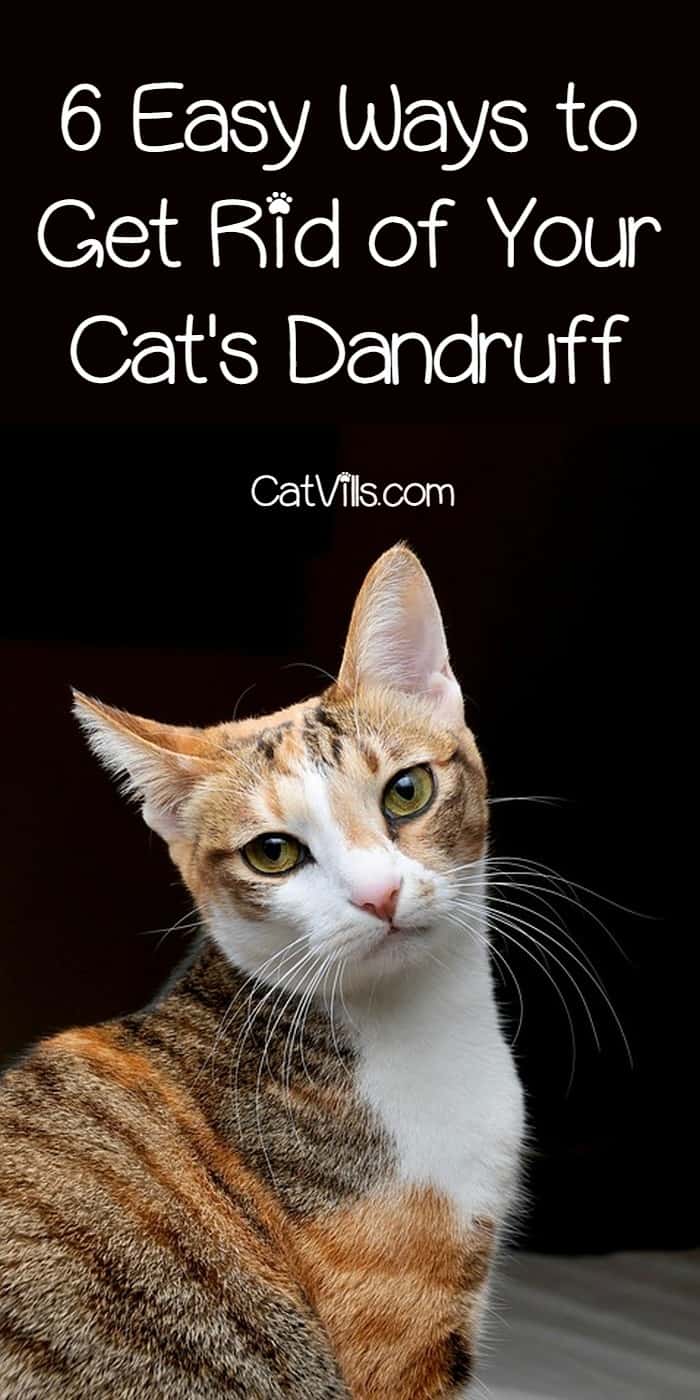Last Updated: 9 months ago
Want to know how to get rid of dandruff on your cat?
It’s been a long day, and all you want to do is settle down on the couch to watch a little TV and cuddle with your feline friend.
She meows and jumps up onto your lap, arching her back into your hand as you give her a pat.
Quickly, you realize that her fur is covered in those unsightly white flakes, and suddenly, the thought of cuddling with her is much less appealing.
Sound familiar? Many cats experience dandruff at some point in their lives, and it’s important not to just ignore it.
Cat dandruff is a symptom of some other issue, and if you see it arise out of nowhere, make an appointment with your vet to rule out larger health issues.
Most dandruff on your kitty is caused by one of six major areas: nutrition, environment, allergies, grooming, parasites, or disease.
How to Detect And Get Rid of Dandruff on Your Cat
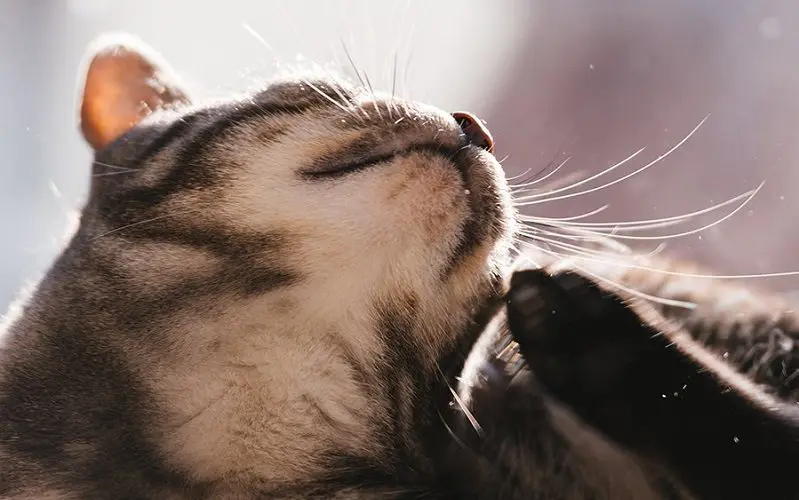
Check out our tips for banishing those itchy flakes quickly and safely!
1. Diet
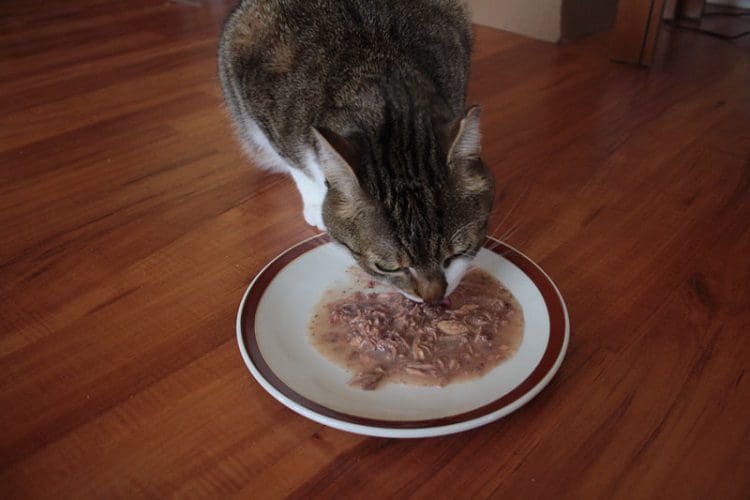
A cat’s diet is very important to an overall healthy body.
They need food with an appropriate amount of fat, and the fat in their diets helps keep their skin from becoming too dry and flaky.
If your cat is on a restricted diet and you start seeing flakes, talk with your vet.
2. Heat

If you live in an area with cold winters and notice your skin getting dry with the heat on, chances are good your cat is dealing with the same thing.
On the flip side, if your cat spends time outdoors and is out on a bright, sunny day, he could get sunburnt.
The resulting peeling skin will produce a couple of days’ worth of flakiness in his fur.
3. Food Products

Cats’ skin is quite sensitive, and it’s possible that coming into contact with shampoos, chemicals, or even plants can cause an allergic reaction.
Food allergies may also manifest in irritated skin. If dandruff shows up out of nowhere, analyze any changes in your cat’s food or products you’re using in your home.
Try cutting out the suspected item (or going back to the old food for a week or so) and see if it makes a difference.
4. Grooming
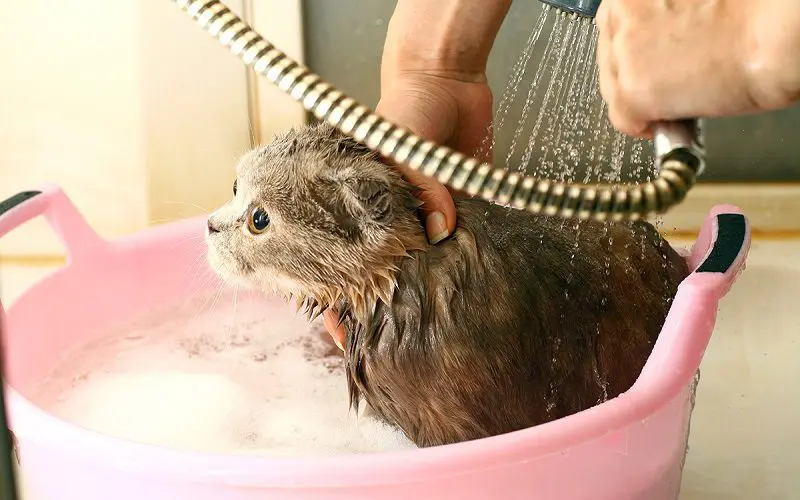
Cats are very clean animals and spend a good amount of their time grooming themselves.
As a cat gets older or if she’s overweight, she may be less capable of otherwise normal grooming behavior.
If this is the case for your kitty, start giving her regular baths with a quality shampoo to help her skin and fur stay clean (don’t overdo it though; too frequent baths may dry out the skin).
5. Irritated Skin
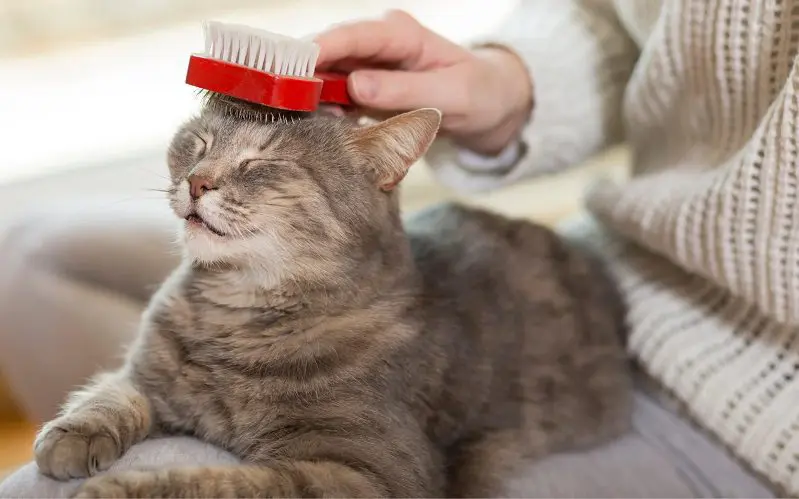
Just like dogs, cats can get fleas. As fleas feed on your cat, they inject their saliva into the skin, causing your cat to scratch and irritate the skin.
Another possible parasite is the Chelyletiellosis mite, or “walking dandruff.”
What you see with walking dandruff is actually the mites themselves (ew) and not dandruff at all.
6. Behavior Change
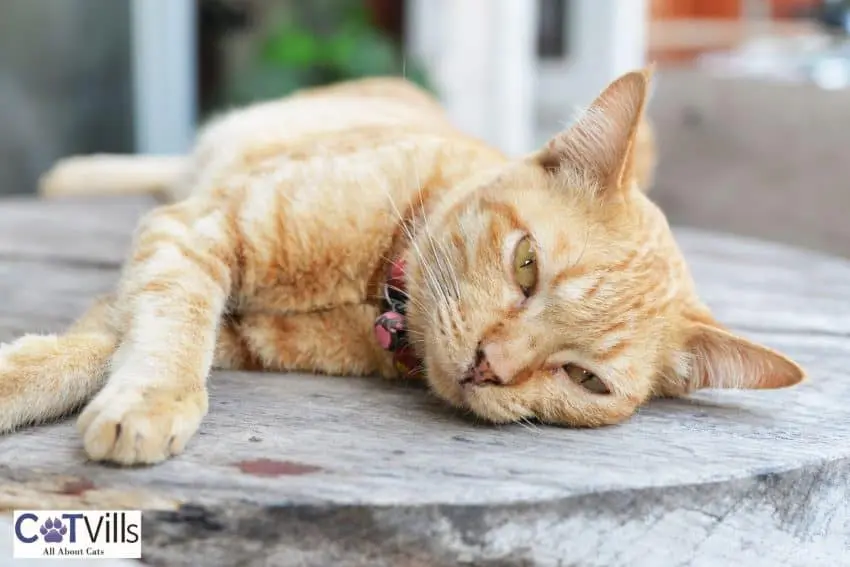
Dandruff can be a symptom of a much more significant health problem, like diabetes or thyroid issues.
If you notice your cat behaving differently, acting more lethargic, and/or experiencing unexplained weight loss or gain, make an appointment with the veterinarian right away.
Many diseases, if diagnosed early, are able to be effectively managed.
Wrap-Up
Once you’ve worked to identify the root cause of your cat’s dandruff, chances are good you can turn the tides and be flake-free before long.
Make sure to come back and let us know what worked for you to get rid of your cat’s dandruff!
Does your cat have dandruff? Do you do anything else to banish it? Share below!
